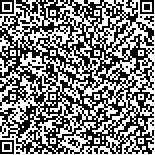| 引用本文: | 张晓君,房海,陈翠珍,战文斌.石鲽(Kareius bicoloratus L.)源杀鲑气单胞菌杀鲽亚种生物学性状的研究.海洋与湖沼,2005,36(1):51-60. |
| |
|
| |
|
|
| 本文已被:浏览 1537次 下载 1845次 |

码上扫一扫! |
|
|
| 石鲽(Kareius bicoloratus L.)源杀鲑气单胞菌杀鲽亚种生物学性状的研究 |
|
张晓君1, 房海1, 陈翠珍1, 战文斌2,3,4
|
|
1.河北科技师范学院动物科学系 秦皇岛066600;2.水产病害与免疫学研究室;3.教育部海水养殖重点实验室;4.中国海洋大学 青岛266003
|
|
| 摘要: |
| 采用分类方法,对从两起石鲽(Kareius bicoloratus L.)细菌性败血感染症病例的病(死)鱼中分离到的相应病原菌,进行形态特征、培养特征、自凝性、色素产生情况及生理生化特性等较系统的表观分类学指征鉴定及代表菌株DNA中(G+C)%的测定等研究。结果表明,分离菌为杀鲑气单胞菌的新亚种(subsp.nov.)并定名为杀鲑气单胞菌杀鲽亚种(Aeromonas salmonicida subsp. Flounderacida subsp. nov.)。经血清型检定,表明60株菌均为同种血清型。选择代表菌株做对健康石鲽、牙鲆、鲤、鲫及泥鳅的人工感染试验,表明了相应的原发病原学意义及较强的致病作用。药敏试验结果表明,对供试37种抗菌药物中的青霉素G等6种耐药,对头孢噻肟等25种高敏,对多黏菌素B、利福平2种敏感,对头孢唑啉等4种在株间存在一定敏感性差异。该研究结果能较全面地反映出该菌的主要生物学性状。 |
| 关键词: 石鲽 杀鲑气单胞菌杀鲽亚种 生物学性状 |
| DOI: |
| 分类号: |
| 基金项目:河北省自然科学基金资助项目,302431号;河北省科技厅资助项目,02220502D号 |
附件 |
|
| STUDIES ON CHARACTERIZATION OF AEROMONAS SALMONICIDA SUBSP. FLOUNDERACIDA SUBSP. NOV. FROM DISEASED STONE FLOUNDER (KAREIUS BICOLORATUS L.) |
|
ZHANG Xiao-Jun,FANG Hai,CHEN Cui-Zhen,ZHAN Wen-Bin
|
|
1.Department of Animal Science, Hebei Normal University of Science and Technology, Qinhuangdao, 066600;2.Laboratory of Pathology and Immunology of Aquatic Animals, The Key Laboratory of Mariculture, Ministry of Education, Ocean University of China, Qingdao, 266003
|
| Abstract: |
| Aeromonas salmonicida is one of the most important fish pathogens because of its widespread distribution, diverse host range and economically devastating impact on cultivated fish, particularly the valuable salmonids. In March 2001 and in April 2002, outbreaks of disease in captive populations of stone flounder (Kareius bicoloratus L.) caused by A. salmonicida in Qinhuangdao, Hebei Province, this has become a serious concern to prevent the culture of the stone flounder there. In the present paper the isolation and characterization of this new subspecies of A. salmonicida obtained from infected stone flounder is described.
The method of traditional classification were used in identificating appropriate pathological bacteria which were isolated from diseased (or dead) stone flounder of two cases which expressed bacterial septicaemia, identification of extensive phenotypic information to 60 pure cultures including morphological and colonial characterization, physiological and biochemical traits, auto agglutination, pigment production and detection of the mol% G+C ratio of the DNA to representative strains, the results showed that the isolates were Gram-negative, occurring singly or in pairs, round-ends, medium-sized but slightly short rods of (0.4–1.0)×(1.0–2.0) μm in size, in addition, electron micrograp by the negatively stained revealed that the cultures have no flagella. The isolates were inoculated in different medium plates, respectively, examined after 24h and 48h of incubation at 28°C. The results showed that the characteristics of colony were identical in the same medium, on nutrient agar, the isolates were smooth, circular, 0.3–0.4mm in diameter after 24h, and 1.0–1.2mm after 48h at 28°C, slightly convex, entire, opaque, greyish-white colonies; on blood nutrient agar, the characteristics of colonies correspond with that of nutrient agar, and with β-haemolysis; on peptone beef extract glycogen agar (PBG), colonies were circular, smooth, entire, slightly convex, yellow in colour, around 0.2mm in diameter after 24h; circular, around 0.5mm in diameter and light-yellow in colour after 48h; on furunculosis agar (FA), colonies were circular, smooth, entire, slightly convex, opaque, pale grayish-white, creamy, around 0.8mm in diameter after 24h and 1.5–2.0mm after 48h, the growth were rich and some strains could produce water-soluble brown pigment, on tryptone soytone agar (TSA), colonies were circular, smooth, entire, slightly convex, opaque, pale grayish-white, creamy, around 0.5–0.8mm after 24h and 1.5–2.0mm after 48h in diameter, the growth were rich and some strains could produce water-soluble brown pigment . The results of physiological and biochemical traits showed that the isolates gave positive reaction for oxidase, catalase, gelatin hydrolysis, maltose, D-mannitol, produce acid but no gas from glucose, reduce nitrate, tween 80, adonitol, D-raffinose, malonate utilization, and negative reaction for indole, methyl red, esculin, glycerol, urease, trehalose, sucrose reduction, arabinose, Voges-Proskauer reaction, produce H2S, D-sorbitol, D-arabitol, i-erythritol, m-inositol, L-rhamnose, salicin, have no motility, can not growth at 37°C, mol% G+C of DNA were 62.6%.
Simultaneously, we conducted studies on the serum homology of isolates, pathogenicity of isolates by experimental infection, the results showed that all the isolates were serologically similar and the isolates have strong pathogenicity. The resistance of selected 18 strains from the isolates which had been identified to 37 antimicrobial agents was determined, the results showed that all strains were susceptible to cefotaxime, ceftriaxone, ceftazidime, cefoperazone, cefepime, aztreonam, erythromycin, azithromycin, streptomycin, kanamycin, gentamycin, tobramycin, amikacin, neomycin, spectinomycin, norfloxacin, ofloxacin, ciprofloxacin, tetracycline, doxycyline, chloramphenicol, sulfamethoxazole and trimethoprim, nitrofurantoin, novobiocin, and enrofloxacinum; resistant to penicillin G, oxacillin, ampicillin, clindamycin, vancomycin, bacitracin; and displayed difference between strains to cefazolin, cefradine, trimethoprim, and furazolidone. In addition, the representative strainHQ010320-1 were re-checked by CCTCC, which the results consistent with ours, and were regarded as new subspecies of A. salmonicida, which were designated as Aeromonas salmonicida subsp. flounderacida subsp. nov. based on its biological properties following the Rules of International Code of Nomenclature of Bacteria. The studies could extensively reflect the main biological properties of this new subspecies. |
| Key words: Stone flounder (Kareius bicoloratus L.), Aeromonas salmonicida subsp. Flounderacida subsp. nov., Biological properties |
|
|
|
|
|
